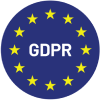There are three things to remember as the pillars of designing B2B customer service questions and strategies:
B2B (business-to-business) customer service covers support and assistance interactions between a seller of products or services and other businesses, either for the latter’s direct benefit or to resell to other customers.
B2B buyers expect the brand sponsors to provide a service package that includes preventative maintenance expertise, warranty options, team education, personalized presentations, and continuous technical support to extend product lifecycles and functionality.
B2B sellers lose customers hand over fist unless the described service components are top-notch. It’s crucial to understand that customers heavily emphasize vendor credibility, trust, commitment, and demonstration of B2B Customer Service Best Practices over the long term.
What is B2B customer service?
In addition to the definitions given above, you may also refer to another Sogolytics article on the subject for other perspectives. Examples of the primary B2B customer service types are as follows:
- Direct benefit business-to-business transactions: Microsoft – under their “enterprise agreement” program (the right to use) – directly licenses its software (with a compendium of support services attached) to qualifying large-scale organizations.
- Business-to-business for resale: Authorized distributors (like CDW, BrunNet, and Insight) buy the license from Microsoft to sell the right to use the iconic company’s brands (Microsoft 365 and Azure) to millions of SMBs. Thus, small and medium-sized businesses enjoy the same (or similar) usage as enterprise companies, but rely on the distributors to provide the attached services (i.e., not Microsoft directly).
Note: In our example above, even the distributors reselling are transacting B2B. Conversely, GE licensed distributors in B2B transactions with GE (to resell its appliance/service packages) are marketing them to consumers (i.e., B2C).
Expanding on this, B2B marketing (versus B2C) requires significantly more emphasis on synergistic and personal relationships that resonate with the primary decision-makers from various departments. Indeed, modern B2B purchasing is no longer dependent on a dedicated buyer guiding the process. It’s a. committee-centric consensus where engineering, HR, finance, legal, and other department heads get involved before anyone signs the dotted line. Why? Two big reasons:
- Complex needs: B2B customers traditionally demand more intricate and technical, financial, and contractual input from sellers than we see in typical B2C marketplaces.
- Service is a massive component: In cases where B2B customers buy for commercial use, services (see examples below) play a pivotal role. They’re a must to ensure:
- Zero (or minimal) operational downtime due to lagging support or malfunctioning purchased items.
- Coverage of every touchpoint, from onboarding to emergency readiness and continuity renewal options
B2B customer service examples
I mentioned in the introduction that preventative maintenance expertise and facilities, warranty options, team education, and continuous technical support are crucial B2B customer service touchpoints. However, there’s nothing like specific examples to provide a more vivid picture.
The most prolific buyer expectations of their vendors, especially soon after a first-time purchase, include:
- Readiness to troubleshoot technical issues
- Seamless capability to integrate software products with existing ones in the buyer’s business.
- Willingness to do whatever it takes to train the customer’s employees until they’re up to speed
- Expert ability to customize the product/service delivery to meet unique needs.
- A commitment to physically or virtually address gaps in product performance, even if user incompetence is the cause.
- Sellers offering:
- End-to-end support for customers’ customers where reselling is in the cards.
- Comprehensive, easy-to-understand warranties with no small-print escape clauses.
Erasing the pain: How does customer service help B2B buyers?
When one digs into B2B customer service best practices, the primary objective is to address commercial customer pain points more comprehensively than competitors. How?
- Identify those most concerning to customers
- Decisively connect your solutions to them as second to none by sending messages that resonate with B2B customers, all of them possibly starting with “Count on us to…”
- Save you money by cutting overheads.
- Accelerate sales revenues
- Reduce your investment without compressing market viability.
- Retain your customers and cut churn.
- Convert your prospects to buyers.
- Elevate new customers to brand loyalists and ambassadors.
And continuing “as follows…”
For example, when you claim to save your client money by cutting overheads, explain how. The same goes for every other item above. If your story is engaging, convincing, and credible, you can make your brand the go-to solution for the identified pain points. To win in intensely competitive markets, your customer services must strive to fulfill the following objectives:
- Cover every vital customer touchpoint and with exemplary services.
- Never allow obstructive pain points to endure.
- Obtain regular customer feedback to ensure your marketing strategies are on track.
- If it’s a one-time purchase, leave no stone unturned in developing the customer as a brand ambassador.
- The same goes for a first-time purchaser with the potential for repeat buying, creating a solid core of loyal customers.
- Where there is churn, follow up to establish it’s not endemic or gaining traction.
For more tips on fine-tuned tactics, see the next section on optimizing your value proposition
So, what makes a great B2B customer service value proposition?
A crucial starting point is to always adhere to B2B customer service best practices.
Success requires versatility, empathy, adaptability, resourcefulness, and resilience to close the deal. Those qualities don’t arrive “just like that!” You must strategize with forethought to address every pitfall in your path. Here are our best tips:
1. Never lose a grip on personalizing your presentations, selling to the buying committee how it wants to buy (which may differ from how you prefer to sell). This means:
- The olden-day method of meeting directly with the chief buyer has largely slipped away.
- Zoom conference calls, customized YouTube videos, and curated podcasts/pitch decks/brochures showing charts or relevant images are the in-thing. However, the interactions can get complicated, given that:
- What induces engineering to accept your value proposition doesn’t necessarily light the CFO’s fire (assuming both parties impact the decision to buy).
- No matter how complex, a competent B2B seller addresses every vital touchpoint of every decision-maker in the mix.
-
2. Appreciate that omnichannel communications are at play here with the buyer’s employees working in-office and remotely, relying on their computers, mobile devices, online internet or app connections, and offline resources. All of it counts under different scenarios and circumstances. A five-star readiness team assesses the “when, how, and where” related to communications that will keep the momentum rolling in its favor.
3. Gear up with the latest AI-enhanced Customer Relationship Systems (CRMs) connected to data analytic algorithms that create meaningful insights. It involves delivering B2B customer proposals in a fraction of human time, automated, personalized, accurate, and engaging.
4. Another seller’s tip is to motivate employee support for a transparent culture by adhering to 360-degree HR principles. What is this?
- It’s a cultural move that removes employee inhibitions and fear of unfair team reactions when speaking one’s mind.
- The system allows anyone on the team to express viewpoints:
- Relating to extraordinary (praise) or sub-standard (criticism) performance.
- Irrespective of where the feedback leads, whether it’s peers, subordinates, or bosses in the crosshairs.
- Every employee on the team must accept the ground rules, knowing that it excludes nobody from exposure to 360-degree feedback (i.e., from any direction).
- The central theme is one of openness and has nothing to do with rewards or penalties associated with traditional reviews (i.e., salary increases, bonuses, reprimands, etc.).
- The benefits that emerge are:
- Continuous and constructive feedback.
- Fast solutions to obstructive services behavior or touchpoints.
- Genuine employee inclusion in deriving optimal B2B customer service solutions and strategic participation
-
None of the above are easy to achieve. Still, it’s a vital cultural move that can make a significant difference for the better. A call center culture built around transparency should reward feedback that enhances customer engagement; it’s integral to future success.
5. Spare no expense in training your B2B customer services sales support team to rally behind every customer’s call or challenge with passion. There’s nothing more damaging to customer loyalty efforts than incompetent or indifferent agent support. The things that traditionally kill the deal are when customers encounter:
- Technology incompetence, contradicting the seller’s guarantee that they only employ experts.
- A faulty routing system that repeatedly connects callers to the wrong agents.
- Being fobbed off to others every time complicated questions enter the conversation.
- Waiting hours for a response to an emergency.
- Sellers ignoring feedback.
- Erratic callbacks and missed deadlines (or promised milestones).
- Support agents’ rudeness or impatience.
- Provided software slowing down, failing to integrate with existing tools, or collapsing under overload.
Remember, your main goal is to solve customers’ pain points, not to create new ones instead.
B2B customer service case studies
-
Alibaba
Alibaba, a leading online B2B platform (China-based), connects millions of buyers and sellers globally on a multi-industry trading platform. It provides a second-to-none user-friendly interface, a watertight payment system, and logistics that create seamless customer journeys, consistently accessing Alibaba’s broad product range at competitive prices.
-
Hubspot
As an inbound marketing and sales platform, it offers customers an all-in-one suite that includes content/social management and email marketing tools underpinned by:
- A fantastic user-friendly interface.
- Insightful analytics.
- AI algorithms that create substantial automation benefits.
A meaningful difference emerges from Hubspot’s resource and education library that provides robust customer support, resonating virally with a thriving and growing audience as evidenced by resilient B2B customer loyalty.
-
Mailchimp
Mailchimp’s highly successful B2B model owes its massive popularity to being the most innovative and user-friendly email marketing platform on the internet that appeals to SMB entities and enterprises alike. Users can’t get enough of Mailchimp’s personalized, intuitive interface, AI-enhanced automation, analytic capabilities, and easy integration with almost any other virtual tool to deliver and manage effective email marketing campaigns. Growing customer loyalty confirms the company’s efficiency and ability to scale campaigns to any size, making it stand out as a leading B2B solution.
Technology and B2B customer service
As the content above demonstrates, B2B customer service in 2025 depends on speed, efficiency, personalization, and customization for success. However, it’s unlikely your efforts will make headway without technology in your corner. With the internet and omnichannel devices driving momentum, stakeholders must access the relevant AI-powered software offered by Hubspot, Salesforce, and Sogolytics. These companies function at the cutting edge of B2B customer services, helping you achieve the lofty goals described in hours versus a human team taking weeks or months of tedious analysis to derive less accurate results.
Data analytics is a vital component of the technology jigsaw puzzle, as is training your team to maximize tool benefits from every angle. It’s crucial to appreciate that AI algorithms in the software can read sentiments (like stress and enthusiasm) from voice tone and text analysis. These insights open new B2B opportunities and predictability around future pain points that require a preventative strategy.
Conclusion
This article has covered B2B customer service best practices from top to bottom, highlighting that marketing in this arena is complex, considering the buying decision is mostly committee-based. So, knowing your customer means appreciating every individual involved, from various departments, each with a focus that may derail the entire proposal even when all other committee members are happy. Thus, it requires an approach backed by B2B customer service experience and the tools that facilitate an omnichannel and personalized solution to gain traction digitally and offline.
Sogolytics is the partner you want in your corner to:
- Design a software package that integrates with your current technology framework.
- Address customers’ pain points decisively and help you deliver results that exceed expectations.
Our team connects your B2B customer service initiatives to a resource pool that’s in touch with clients’ touchpoints from the attention-getting phase to closing the deal and beyond. So, contact us today for a no-obligation discussion about your program. We’re good listeners and look forward to contributing to your success.
FAQs
Q: What is B2B Customer Service?
A: B2B customer service covers support and assistance interactions between a seller of products or services and other businesses, either for their own benefit or to resell to other customers. B2B buyers expect the brand sponsors to provide a service package that extends product lifecycles and functionality.
Q: What are B2B customers’ most crucial requirements?
A: Readiness to troubleshoot technical issues, integrate software products with existing ones, train employees to use new software tools, customize solutions to meet unique needs, and erase obstructive touchpoints quickly. Finally, vendors must offer end-to-end support with easy-to-understand warranties.
Q: What are the most compelling features of a B2B customer service strategy?
A:
- Personalized presentations
- An omnichannel communications strategy.
- Competent agent support
- A 360-degree HR policy
- AI-enhanced Customer Relationship Systems (CRMs)














